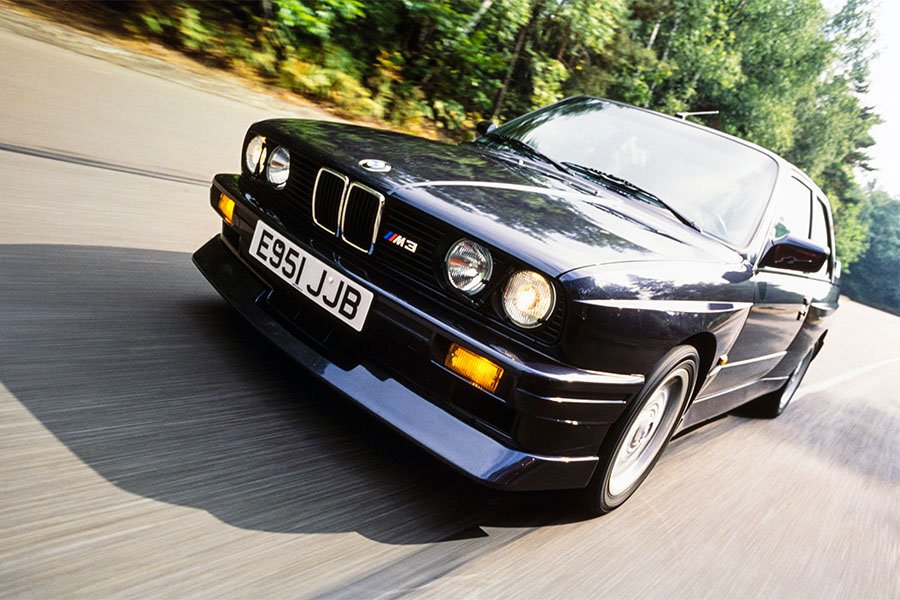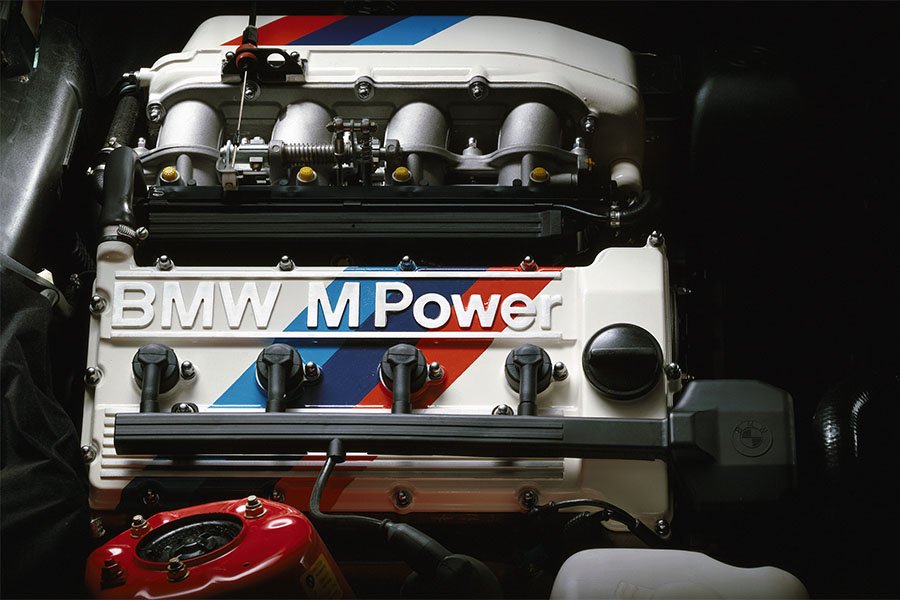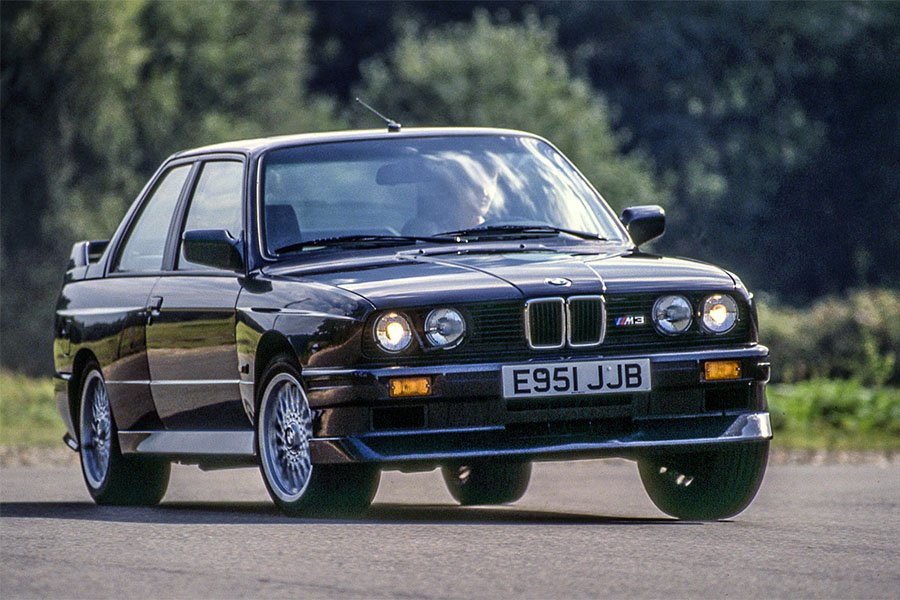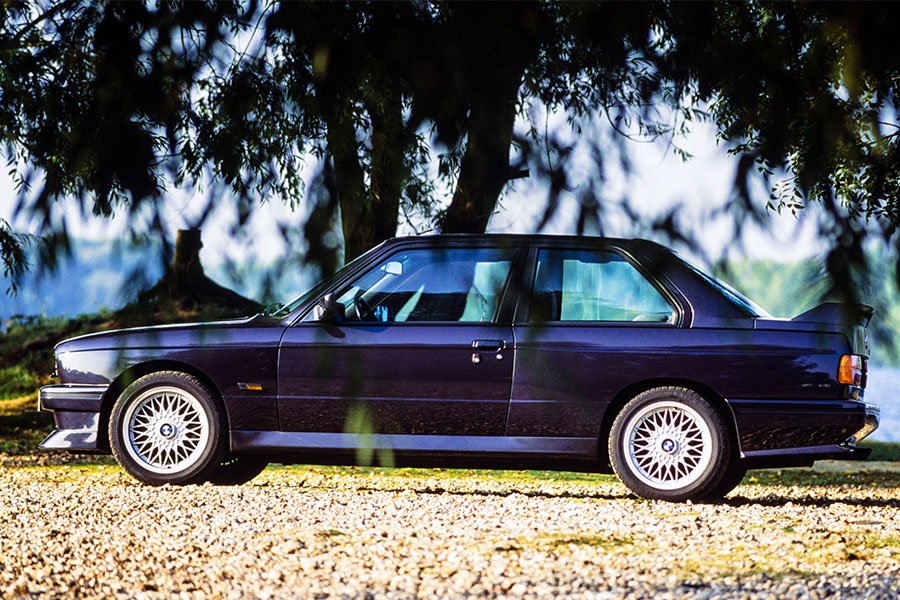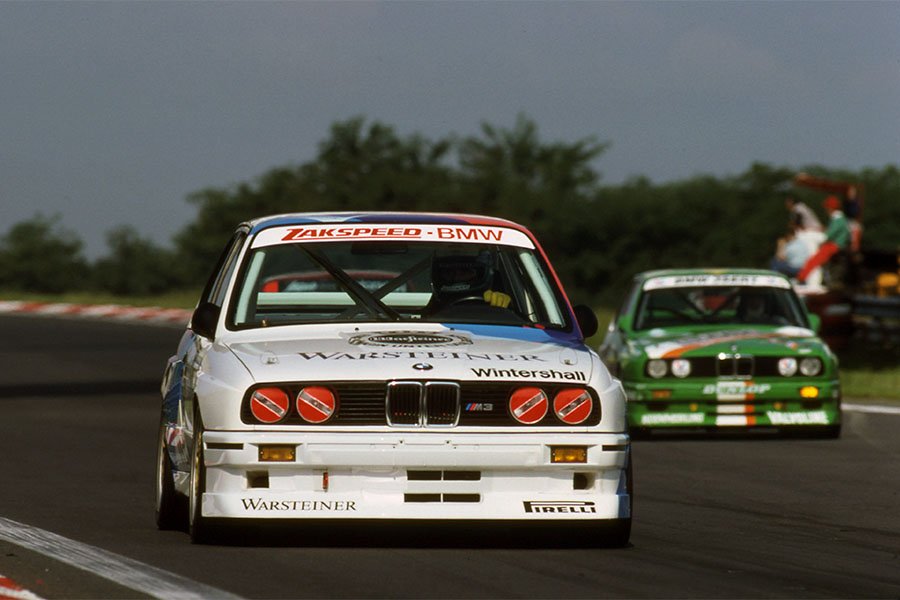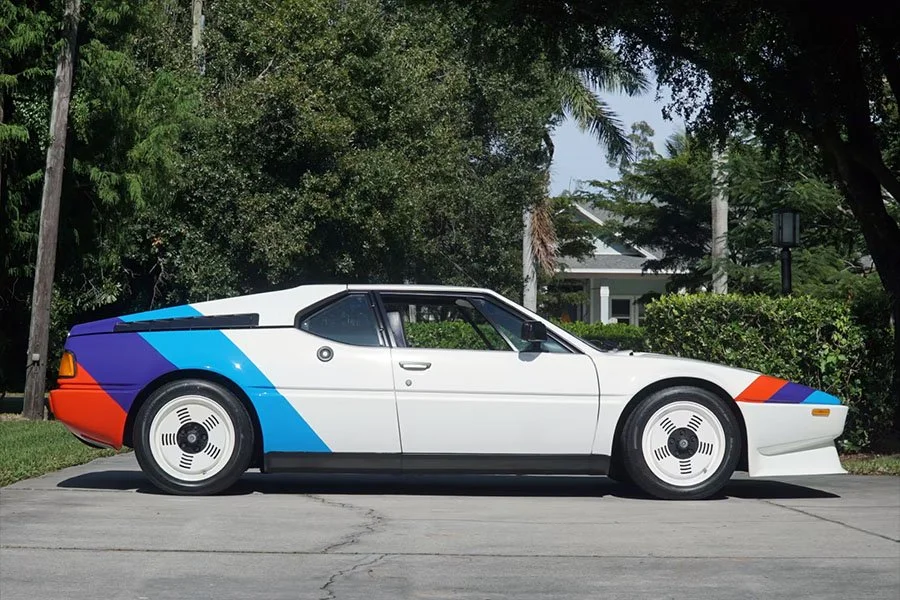Guide: BMW E30 M3 Evolution 2 - a Historical & Technical Appraisal
/BACKGROUND
Once a manufacturer had constructed the 5000 base cars required for Group A homologation, further uprated Evolution variants could be produced once every twelve months. For each Evolution to be approved, 500 base cars to this latest specification had to be built.
The first Evolution was permitted as soon as Group A homologation had been approved. Accordingly, BMW had produced a batch of E30 M3 Evolution 1s with revised cylinder heads upon which the Group A racing variants for the M3’s debut season in 1987 were based.
Despite running in the Division 2 category for cars with engines of less than 2.5-litres, the M3 went on to have an extremely successful debut campaign even though its principal rival, the Ford Sierra Cosworth, ran an engine with a swept volume of nearly 2.8-litres when the 1.4 multiplier for turbocharged engines was taken into account.
The M3 won four out of eleven races outright in the inaugural World Touring Car Championship and took Division 2 honours on all but one occasion (when BMW was excluded from the opening race of the year at Monza). Schnitzer driver Roberto Ravaglia was crowned 1987 Driver’s Champion, but Ford team Eggenberger Motorsport claimed that year’s Entrant’s title.
In the 1987 European Touring Car Championship, the M3 won six from seven races outright and took a clean sweep of the Division 2 honours. Linder Rennsport driver Winfried Vogt secured the 1987 Driver’s title and BMW were crowned Manufacturer’s champions.
In the DTM, Zakspeed BMW Junior Team member Eric van de Poele became 1987 champion as the M3 won five out of the ten races that year.
Elsewhere, domestic titles were scooped in Italy, Japan and Australia.
To keep the M3 at the head of the field for 1988, a more extensive batch of revisions were made to the second evolution. Increased power, reduced weight and improved aerodynamics were the order of the day.
Evolution 2 production began in March 1988 and ran until May.
ENGINE / TRANSMISSION
In the Evolution 2’s engine bay was the most potent iteration of BMW’s inline four cylinder S14 motor yet seen.
These non-catalysed power units came with new camshafts and pistons that enabled the compression ratio to be hiked from 10.5:1 to 11.0:1.
There was also a more efficient air intake tube for the engine and a lightened flywheel.
The existing Bosch Motronic engine management software was re-mapped to optimise performance.
Compared to the S14 motors fitted to other M3s of the period, the Evolution 2 engine was easily identifiable on account of its white instead of black cam cover and intake plenum chamber, both of which were further decorated with a red and blue BMW Motorsport tricolour.
Peak output was 220bhp at 6750rpm and 181lb-ft at 4750rpm.
For comparison, the non-catalysed S14 engine used in other M3s of the time pumped out 200bhp and 176lb-ft at the same engine speeds.
The rest of the Evolution 2 engine’s characteristics were unchanged. These compact and high-revving power units were effectively a combination of the basic cast-iron inline M10 block with a shortened four valve light alloy DOHC head derived from the six cylinder M88 and S38 motors.
They featured individual throttle plates for each cylinder plus siamesed pistons, machined intake and exhaust ports and a crankshaft with eight counterparts. An alloy oil cooler was located behind the front spoiler.
Like the M88 and S38 engines, the S14 did not have hydraulic lifters and thus required periodic valve adjustment.
Displacement was 2302cc thanks to a bore and stroke of 93.4mm and 84mm respectively.
Transmission was through a Getrag 265 close-ratio five-speed gearbox (with dogleg first), a hydraulic clutch and a limited-slip differential with 25% locking factor.
For the Evolution 2, BMW installed a slightly reduced final drive ratio to provide a higher top speed (3.15:1 instead of 3.25:1).
BODYWORK
The Evolution 2’s front apron was modified to incorporate a more aggressive chin spoiler and brake cooling ducts instead of fog lights.
The trunk lid featured a rear spoiler complete with new trailing flap.
The front and rear bumper assemblies, the trunk lid, spoilers and bumper supports were all made lighter than on previous iterations of the M3.
More weight was saved thanks to the installation of thinner side and rear glass.
Only three body colours were offered: Macau Blue, Nogaro Silver and Misano Red.
Otherwise, all the normal M3 features were retained and, apart from the hood, these cars shared no other panels with the regular E30 Coupe. They came with flared fenders, a re-profiled rear windscreen, a raised trunk lid and an enormous rear spoiler. Other M3-specific features included extended side sills and special bumpers.
All these M3-specific body parts were fabricated from SMC composite. To improve rigidity, both the front and rear windscreens were bonded in place.
Blacked out Shadowline trim was standard. M3 badges were mounted on the front grille and tailgate.
CHASSIS
Every Evolution 2 came with the normally optional Pirelli-shod 7.5 x 16-inch BBS alloy wheels fitted as standard (up from 7 x 15-inches).
The rest of the chassis set-up was unchanged.
The starting point for each M3 was a standard E30 Coupe pressed steel body shell. To this, the familiar MacPherson strut / semi-trailing arm suspension arrangement was installed. However, to improve handling, every M3 came with shorter, stiffer springs, gas-pressurised Boge dampers and thicker anti-roll bars.
A special Bosch ABS system was also installed and the brake discs were bigger than on normal E30s: 280mm at the front (ventilated) and 282mm at the rear (solid). Reinforced single piston calipers were sourced from the E28 5-series along with the stub axles and wheel bearings.
A power-assisted quick ratio steering rack was also unique to the M3.
A 70-litre fuel tank was installed under the rear seats.
INTERIOR
Inside, the Evolution 2 came with just one type of upholstery: silver grey checked cloth trim with matching leather seat bolsters. Uniquely, both the front and rear seat faces were accessorised with BMW Motorsport tricolour lapel flashes of the type used on the E28 M5.
Other special equipment included a numbered plaque located ahead of the gear lever and door sill plates with an M3 logo.
A green tinted windscreen strip was fitted as standard.
The rest of the Evolution 2’s interior specification was as per the standard M3 with manually adjustable Recaro sports seats up front and individually contoured buckets in the back.
Red needled VDO instrumentation was unique to the M3. It included a special 160mph (260kmh) speedometer and 8000rpm rev counter. These two large dials were split by a BMW Motorsport logo and an oil temperature gauge which replaced the economy meter that was fitted to the rest of the E30 range.
A three-spoke leather-rimmed M-Tec I steering wheel was fitted as standard along with a Motorsport-branded gear lever, tinted glass and electric door mirrors.
OPTIONS
Although paint and upholstery options were restricted on the Evolution 2, buyers were still able to enhance their car with air-conditioning, electric windows, an electric sunroof, an on-board computer, cruise control, heated front seats, headlight wash/wipe, rear head rests, velour floor mats and a choice of audio systems.
WEIGHT / PERFORMANCE
BMW quoted the Evolution 2 at 10kg less than the standard M3. This theoretically should have resulted in a figure of 1155kg but press reports of the time routinely quoted a figure of 1200kg.
The 0-62mph time dropped from 6.5 seconds to 6.2 seconds.
Top speed went from 146mph to 152mph.
END OF PRODUCTION
The E30 M3 Evolution 2 was produced between March and May of 1988.
501 were built, all of which were left-hand drive.
A third evolution, the bigger-engined 2.5-litre Evolution 3 Sport, was subsequently released in December 1989.
COMPETITION HISTORY
After just a single season, plans for a repeat World Touring Car Championship were abandoned.
Meanwhile, the European Touring Car Championship proved predictable and would itself not survive beyond the 1988 season.
That year, the M3 won three rounds outright (Donington, Zolder and the Spa 24 Hours) and took Division 2 honours at all eleven rounds. Schnitzer’s Roberto Ravaglia claimed the Driver’s title, but BMW once again missed out to Ford in the Car’s championship.
By contrast, the DTM went from strength-to-strength and benefited from the presence of several factory supported Mercedes teams in addition to those from BMW and Ford.
For 1988, the DTM format switched to double headers at each of the eleven rounds with the exception of the Nurburgring 24 Hours. The M3 won seven out of 21 races that year: two at Hockenheim, two at the Nurburgring Eifelrennen weekend, two at the Salzburgring and one at Mainz-Finthen.
Ford’s Klaus Ludwig won the title. Fourth-placed Markus Oestreich of the BMW M Team Zakspeed was the top M3 driver.
In the absence of a World or European Touring Car Championship for 1989, the DTM became the premier tin top series.
Of the 21 races that year (ten double header weekends and the Nurburgring 24 Hours) BMW won seven (two at Zolder, two at the Nurburgring Eifelrennen meeting and one at the Hock Rennsport Festival, the Hockenheim ADAC Preis and Avus). Schnitzer M3 driver Johnny Cecotto was crowned champion.
Text copyright: Supercar Nostalgia
Photo copyright: BMW - https://www.bmw.com
